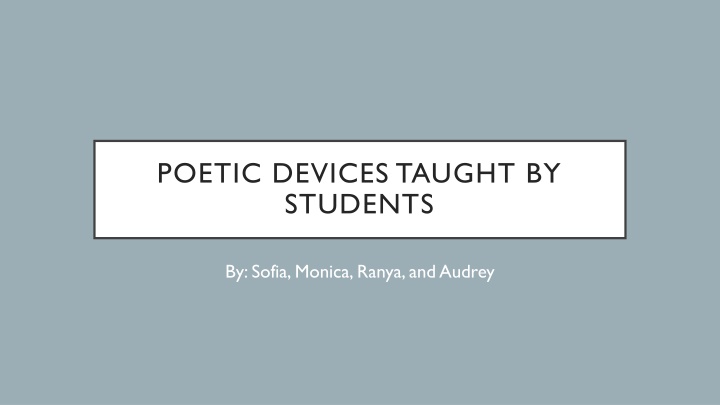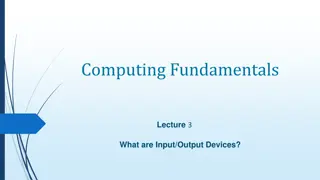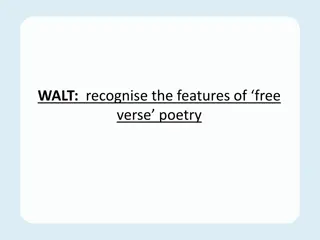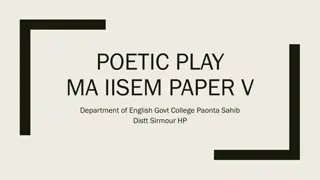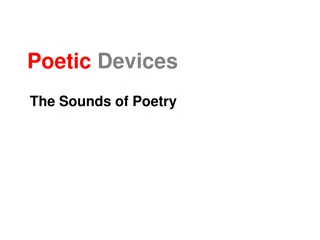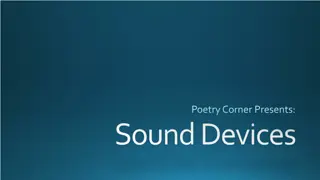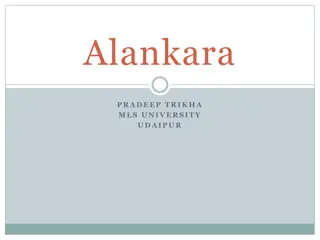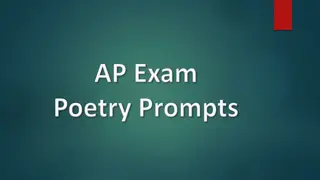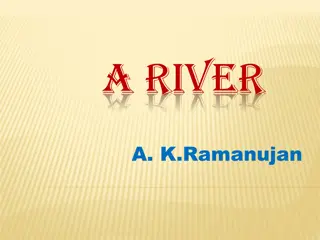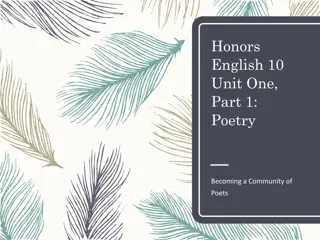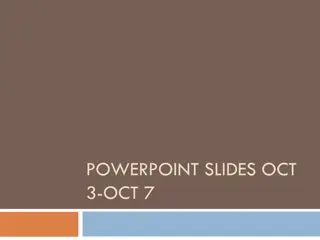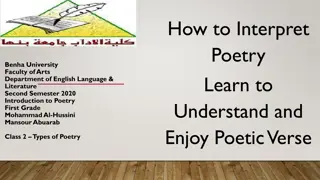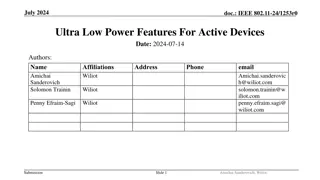POETIC DEVICES TAUGHT BY STUDENTS
Explore the beauty of poetic devices such as alliteration, euphony, cacophony, and assonance taught by students Sofia, Monica, Ranya, and Audrey. Understand the definitions and examples of each device through engaging explanations and compelling visuals. Discover the enchanting world of literary sound patterns and their impact on the written word.
Uploaded on Feb 24, 2025 | 1 Views
Download Presentation

Please find below an Image/Link to download the presentation.
The content on the website is provided AS IS for your information and personal use only. It may not be sold, licensed, or shared on other websites without obtaining consent from the author.If you encounter any issues during the download, it is possible that the publisher has removed the file from their server.
You are allowed to download the files provided on this website for personal or commercial use, subject to the condition that they are used lawfully. All files are the property of their respective owners.
The content on the website is provided AS IS for your information and personal use only. It may not be sold, licensed, or shared on other websites without obtaining consent from the author.
E N D
Presentation Transcript
POETIC DEVICES TAUGHT BY STUDENTS By: Sofia, Monica, Ranya, and Audrey
ALLITERATION The definition of alliteration: The occurrence of the same letter or sound at the beginning or closely connected words. In other words alliteration is when two or more words that start with the same sound are used repeatedly in a phrase or a sentence. The repeated sound creates the alliteration, not the same letter. For example, 'tasty tacos' is considered an alliteration, but 'thirty typist' is not, because 'th' and 'ty' don't sound the same.
ALLITERATION Examples: Peter Piper picked a peck of pickled peppers. This is a good example of alliteration because they sound the same at the beginning of the sentence which is the letter P, but it also shows that there could be other words in the middle, but it is still alliteration. Some more examples: The child bounced the ball at the backyard barbeque. The beautiful bouquet blossomed in the bright sun. breeze, blue; foam, flew; followed, free; and silent, sea
EUPHONY Yoo-fuh-nee Euphony is the combining of words that sound pleasant together or are easy to pronounce, usually because they contain lots of consonants with soft or muffled sounds History: The word euphony comes from the Greek word meaning "good sound." Elements used to create euphony include rhyme, rhythm, and repetition Ask yourself "Does this sentence sound good?" Example: I have to tell you, there are times when the sun strikes me like a gong, and I remember everything, even your ears
CACOPHONY The definition of cacophony: A riot of rattling and loud sounds, typically sounds inharmonious. A good way to be able to understand a cacophony is to picture going through a busy city where there is various overwhelming noises such as music, people screaming, cars honking and construction. Within literary terms, a cacophony means banging and clashing sounds that are put together in writing. Most often, cacophonies are associated with the plosive constants such as t, p, and k Examples (literary) : The sentence "That kid better stop taking cake pops" is a good example of a cacophony because the sounds a very sharp. "Plaster nor spakle nor paste nor tacky wax will patch this rift" This is another good example of a cacophony as this sentence sounds very harsh and unpleasant.
ASSONANCE Assonance is a literary device that involves the repetition of vowel sounds within words that are close to each other, but not necessarily at the beginning or end of the words. It is often used in poetry and prose to create a musical or rhythmic effect, and to draw attention to certain words or ideas. Example: in the sentence "The rain in Spain stays mainly in the plain," the repetition of the long "a" sound in the words "rain," "Spain," and "mainly" creates an assonant effect. Similarly, in the phrase "fleet feet sweep by sleeping geese," the repeated "ee" sound in "fleet," "feet," and "sweep" creates an assonant effect. History: The word comes from the Latin assonare, which literally translates as respond to.
CONSONANCE Consonance is a literary device that refers to the repetition of consonant sounds in close proximity, particularly at the end of words or stressed syllables. This repetition can occur within words, as well as at the end of multiple words. Consonance is often used to create a musical or rhythmic effect in poetry or prose. It can also be used to create a sense of unity or cohesion in a piece of writing. For example, consider the following line from Robert Frost's poem "Acquainted with the Night": Example: "I have stood still and stopped the sound of feet." In this line, the repetition of the "s" and "d" sounds in "stood," "still," "stopped," and "sound" creates a sense of harmony and musicality. History: It comes directly from Latin consonantia "harmony, agreement," from consonantem (nominative consonans) "agreeing in sound,"
